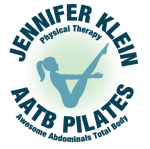There has been a growing resurgence in the Pilates movement the past decade and I am often asked “What is Pilates?” The best way to describe Pilates is to describe the underlying principles.
Pilates, described as “a thinking way of moving,” is a controlled exercise system of slow and precise movements developed by Joseph Pilates. It’s described as “a thinking way of moving,” because Pilates works by developing and integrating our awareness of our bodies, our core strength and our mobility. The technique of Pilates is rooted in essential principles: relaxation, concentration, coordination, alignment, breathing, centering and stamina. Pilates and Physical Therapy are synergist services.
Principles of Pilates:
- Relaxation. By learning to relax you avoid undue tension. In Pilates, the secret is to use just the right amount of effort, not too much or too little, in a relaxed but focused way, adjusting to the needs of the movement.
- Concentration. Joseph Pilates believed that it is in our minds that our physical movement begins. In Pilates, you practice greater body awareness, becoming able to focus on what each part of the body is doing at any particular time. Like learning to ride a bike, with practice this improved concentration can become like second nature.
- Coordination. Pilates practice slows us down so that we can become more aware of the messages being sent back to our brain and our movement relating to it. It takes practice, and Pilates can seem complex at first as there are so many things to be aware of (pulling up, inhaling, exhaling, stretching, relaxing, contracting so many different body parts at once). However, with practice your Pilates coordination improves and subsequently the benefit spill over to other aspects of your life as well.
- Alignment. Pilates works by aligning the body in a way that protects and supports the entire skeletal system and internal organs to promote optimal health and well-being. It develops proper posture.
- Breathing. Pilates involves breathing fully into and expanding chest and laterally expanding rib cage. This is thoracic breathing, rather than abdominal breathing. Because in Pilates the core abdominal muscles are often contracted, holding the body’s central stability and strength. The rhythm of the breathing flows naturally.
- Centering. Joseph Pilates called the abdominal muscles a “girdle of strength.” The abdominals cross the torso in layers and form natural protection for the spine and internal organs. Centering focuses attention on the abdominals, drawing them upward and inward, toward the spine. This is the beginning point for most movements. This also helps protect your back from injury.
- Stamina. As with any other activity, endurance is increased with practice. AS exercises become more familiar, stamina increases, the ore postural muscles become stronger, and movements that once seemed tiring and difficult will also become second nature.

Recent Comments